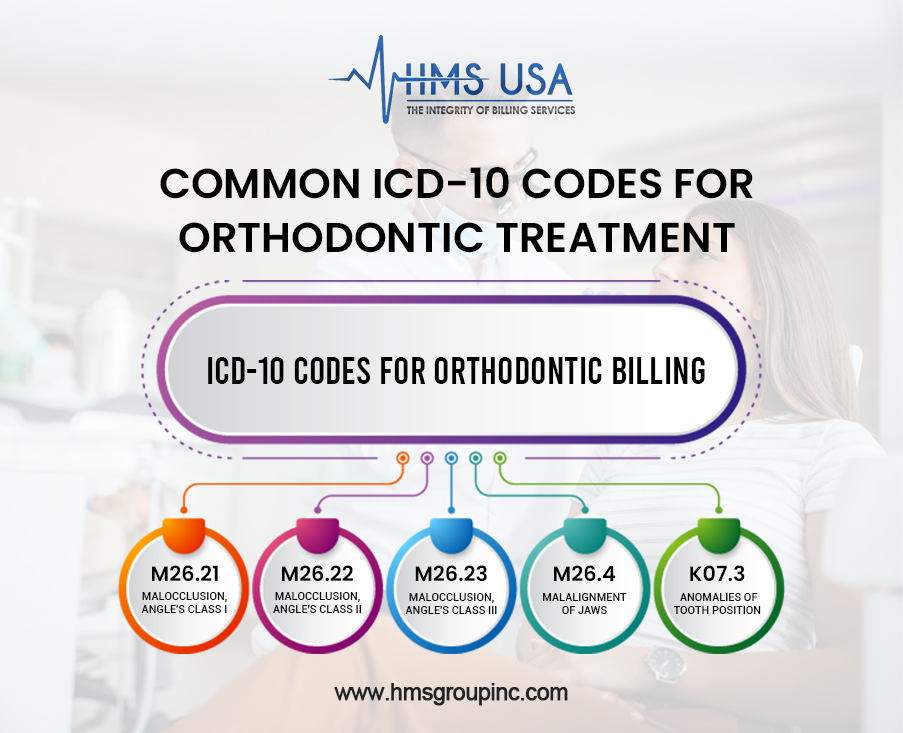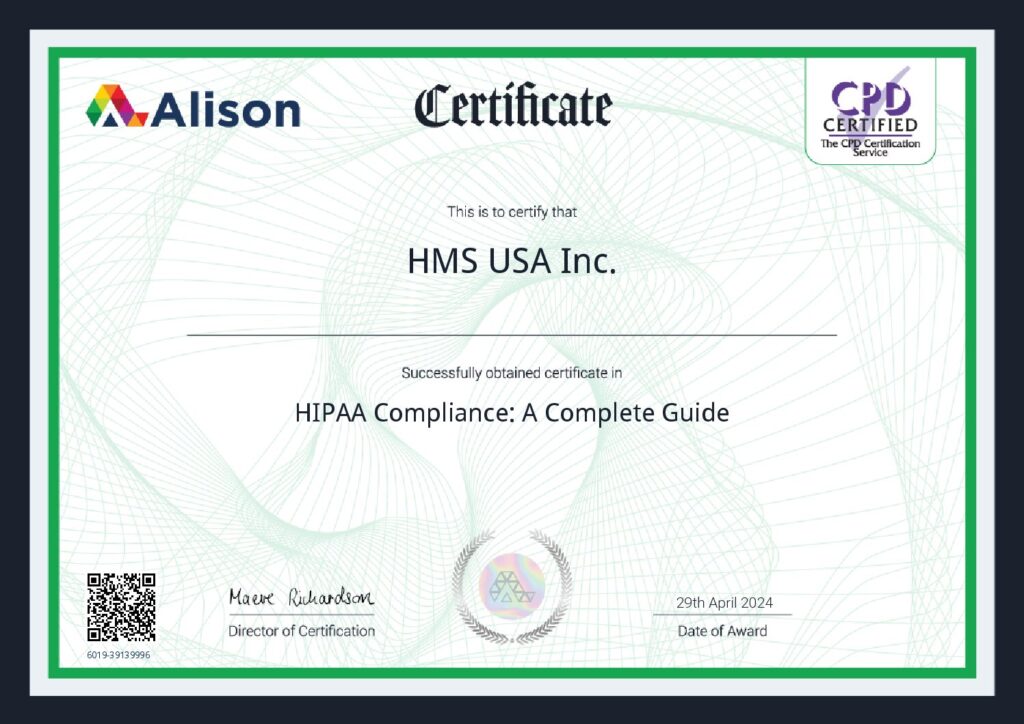Even a small coding mistake can interrupt your orthodontic reimbursement process. ICD-10 codes for orthodontics play a critical role in linking the patient’s diagnosis, like malocclusion or jaw misalignment, to the medical necessity of treatment. These diagnostic codes help insurers understand why a procedure is performed, ensuring faster claim approvals and smoother revenue flow.
Whether it’s braces, corrective aligners, or jaw realignment procedures, accurate coding ensures that orthodontic billing stays compliant and error-free. In this guide, you’ll explore the essential ICD-10 codes for orthodontic treatment, their correct usage, and practical strategies to prevent denials and boost reimbursement accuracy.
What Are ICD-10 Codes and Why Do They Matter in Orthodontics
ICD-10 codes are universal identifiers used in healthcare to classify diagnoses and diseases. In orthodontics, these codes explain dental or jaw-related conditions that require correction, such as overbites, underbites, or crowding.
Using the correct ICD-10 code for orthodontic treatment ensures your claims reflect medical necessity. It helps insurance companies process approvals faster and ensures that your practice maintains compliance with payer and federal regulations. Simply put, correct coding bridges the gap between diagnosis and reimbursement, making your orthodontic billing more efficient and transparent.
Common ICD-10 Codes for Orthodontic Treatment
Here are the most frequently used ICD-10 codes for orthodontic billing:
- M26.21 – Malocclusion, Angle’s Class I: Normal bite alignment with spacing or rotation issues.
- M26.22 – Malocclusion, Angle’s Class II: The upper jaw extends beyond the lower jaw (overbite).
- M26.23 – Malocclusion, Angle’s Class III: The lower teeth extend beyond the upper teeth (underbite).
- M26.4 – Malalignment of jaws: Jaws are misaligned, affecting bite and function.
- K07.3 – Anomalies of tooth position: Teeth are crowded, spaced, or irregularly placed.
Always use the most specific ICD-10 code for orthodontic treatment that reflects the patient’s exact condition. Precision prevents claim delays, ensures payer compliance, and supports accurate clinical documentation.
ICD-10 Code for Orthodontic Treatment and Care
Orthodontic treatment involves active steps such as fitting braces, aligners, or retainers to correct alignment or bite issues. Proper documentation of these services supports reimbursement accuracy and patient record consistency.
ICD-10 Code For Orthodontic Care
Orthodontic care includes follow-up visits, adjustments, and maintenance after or during active treatment. Accurate coding of these visits ensures continued coverage and prevents denials.
Common ICD-10 codes for orthodontic care include:
- Z01.20 – Dental check-up without abnormalities
- Z01.21 – Dental check-up with findings
- Z46.3 – Fitting and adjustment of dental devices
These codes reflect ongoing care and maintenance, ensuring insurers recognise each visit’s necessity for long-term dental health.
Related Dental ICD-10 Codes
Orthodontic treatment often correlates with other dental issues. Using related dental ICD-10 codes provides insurers with a complete picture of the patient’s oral condition, strengthening claim justification.
Common supporting codes:
- K02.9 – Carious teeth ICD-10 (Tooth decay, unspecified)
- K00.6 – Disturbances in tooth eruption or crowding
- K08.1 – Partial or complete tooth loss
- M26.4 – Malalignment of jaws
Including these in orthodontic claims enhances documentation accuracy and speeds up payer processing.
ICD-10 for Preoperative Clearance in Orthodontics
Before performing orthodontic surgeries, like jaw realignment or bone correction, patients must undergo preoperative clearance. The ICD-10 preoperative clearance code helps document the medical necessity and readiness for surgery.
Common code:
Z01.818 – Encounter for other preprocedural examinations.
This code ensures that the patient has been medically evaluated and cleared for surgery, safeguarding compliance and reimbursement eligibility.
Understanding the Role of ICD-10 Codes in Orthodontic Insurance Claims
ICD-10 codes for orthodontics do more than describe a diagnosis; they justify treatment. Insurance payers rely on these codes to confirm medical necessity before approving claims.

Incorrect or incomplete coding can result in denials, delayed reimbursements, or compliance risks. Consistently accurate documentation ensures faster claim approval, maintains transparency, and supports your orthodontic revenue cycle management process.
Want to eliminate claim denials and ensure error-free orthodontic billing? Partner with HMS USA Inc., the best medical billing company in the USA, for accurate ICD-10 coding and seamless claim management.
Tips for Accurate Orthodontic ICD-10 Coding
To maintain clean claims and compliance, follow these expert tips:
- Verify Patient Details: Ensure all personal and diagnostic information aligns with claim data.
- Match Diagnosis to Procedure: The ICD-10 code must clearly support the service billed.
- Stay Updated: Review annual ICD-10 revisions and payer-specific policies.
- Keep Thorough Records: Document each stage of treatment and every adjustment.
Following these best practices reduces coding errors and strengthens audit readiness for your orthodontic practice.
How Professional Billing Services Simplify Orthodontic Coding
Orthodontic billing is complex, from code selection to payer rules. Even a single incorrect ICD-10 entry can disrupt payments. That’s why partnering with professional billing experts makes a difference.
At HMS USA Inc., our certified billers and coders specialise in dental and orthodontic billing, ensuring each diagnosis aligns with treatment and insurance requirements. We minimise errors, reduce rejections, and accelerate claim processing so you can focus on improving smiles, not paperwork.
Let HMS USA handle your coding so you can focus on your patients’ care, because accuracy in coding means accuracy in payments.
Final Words
Accurate ICD-10 coding for orthodontics is the foundation of effective billing and insurance success. By using precise diagnosis codes and maintaining thorough documentation, orthodontic practices can prevent denials, ensure compliance, and speed up reimbursements.
Partnering with experienced billing professionals like HMS USA Inc. can help you simplify coding, stay audit-ready, and achieve consistent revenue growth.
FAQs
What are the ICD-10 codes for orthodontics?
They describe orthodontic-related diagnoses, linking clinical conditions like malocclusion or jaw misalignment to treatment and insurance claims.
What is the ICD-10 code for orthodontic treatment?
Codes such as M26.21, M26.22, and M26.4 represent different malocclusions or jaw misalignments requiring orthodontic care.
What is the ICD-10 code for orthodontic care?
Use Z46.3 for fitting braces or dental devices and Z01.20–Z01.21 for routine dental check-ups or follow-ups.
What is the ICD-10 code for carious teeth?
The carious teeth ICD-10 code is K02.9, used for unspecified tooth decay that may require orthodontic evaluation.
What is the ICD-10 code for preoperative clearance?
Use Z01.818, Encounter for other preprocedural examinations, especially for pre-surgical orthodontic evaluations.








